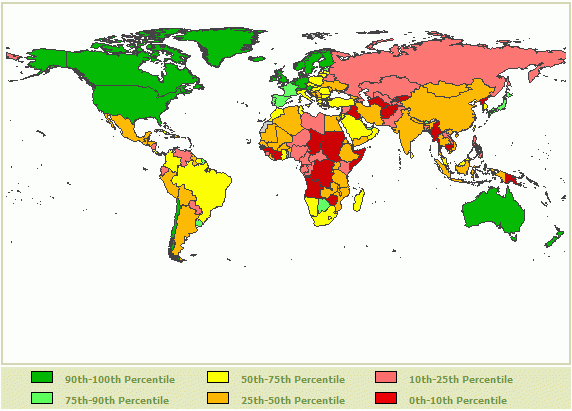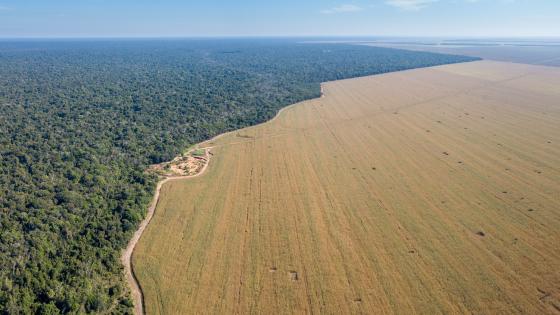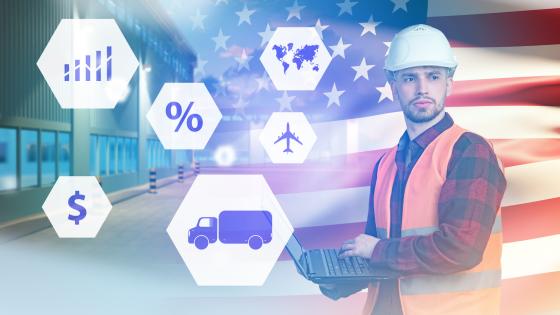In 2008, the World Bank allocated $4.4 billion for improving public sector governance in various countries and projects across the world. This equals an impressive 18.8% of total World Bank lending. The World Bank’s anticorruption website states that “The Bank has identified corruption as among the greatest obstacles to economic and social development… it is the greatest obstacle to reducing poverty, it distorts the rule of law, and weakens a nation's institutional foundation.” Despite this recent focus on improving governance, corruption amongst government officials is by no means a new problem. Chanakya, an adviser and prime minister to the first Mauryan Emperor Chandragupta (c. 340-293 BC), wrote in the ancient Indian political treatise, the Arthaśāstra, “It’s just as difficult to detect an official’s dishonesty as it is to discover how much water is drunk by the swimming fish.” Similarly, in the 18th century, the Ch'ing dynasty in China rewarded officials for not being corrupt by providing an “integrity nourishing allowance.” Figure 1 shows the prevalence of corruption across the world today, as measured by the World Bank’s Governance Indicators for “control of corruption.”
Figure 1. Control of corruption, 2007
Source: Kaufmann, Kraay, and Mastruzzi (2008).
In recent years, economists have taken advantage of cross-country survey-based measures of corruption to analyse the impact of corruption on a variety of economic and social indicators. Corruption has been shown to reduce economic growth (Mauro, 1995), distort governmental expenditures (Mauro, 1998), retard foreign investment (Wei, 2000) and reduce the effectiveness of foreign aid (PSRA 2003). These debilitating effects of corruption, contrast sharply with earlier notions advanced by Leff (1964) and Huntington (1968) that corruption can be efficiency-enhancing because it removes government-imposed rigidities that impede investment and interfere with other economic decisions favourable to growth. This view is succinctly captured in the notion that corruption “greases the wheels of trade.” As Huntington states “In terms of economic growth, the only thing worse than a society with a rigid, overcentralised, dishonest bureaucracy is one with a rigid, overcentralised, honest bureaucracy.” The crux of the argument is that, in a country rife with onerous regulations, the opportunity to offer bribes allows firms to evade formal regulatory barriers. Similar to deregulation, this can be welfare-improving.
Corruption and trade
In recent years, the impact of corruption in customs has come to the forefront of trade policy debate. The WTO strongly believes that agreements on trade facilitation will provide a significant boost to world trade. Trade facilitation discussions have been undertaken in the Doha Round in an effort to promote transparency, reduce red tape, and diminish the scope for corruption in customs. So is the WTO right in believing that reducing corruption in customs has the potential to enhance trade flows between counties?
The reason why this question is interesting is that despite various rounds of trade talks, many countries exhibit high levels of tariff and non-tariff barriers on goods coming through customs. Therefore, the impact of corruption in customs on trade flows may be conditional on the extent of regulatory barriers that prevail in a particular country. Our work argues that while corruption impedes trade in an environment of low tariffs, it may actually be trade-enhancing when nominal tariffs are high.
We define two types of corrupt behaviour. On one hand, corrupt customs officials request bribes to do what they are supposed to do, which is to clear goods through customs; on the other, they may be bribed to do what they are not supposed to do, allowing firms to avoid formal trade barriers such as import tariffs and quotas. Following Bardhan (2006), we call the former extortion and the latter evasion. In reality, country case studies have documented that corruption in customs facilitates both extortion and evasion.
Parayno (1999) describes both forms of corrupt behaviour in the Philippines, where businesses became accustomed to giving small bribes for customs services and it was necessary to pay to "facilitate" even fully legitimate transactions. At the same time, misdeclaration, misclassification, and undervaluation in formal entry declaration processing were common ways by which firms could circumvent official trade barriers, in cooperation with corrupt custom officials. Arduz (2000) describes a system in Bolivia, where most goods go through a system of "parallel customs", in which customs officers levied their own taxes rather than the official trade taxes. Fisman and Wei (2004) find strong evidence for evasion through mislabelling and misclassification of imports in the context of trade between Hong Kong and China. Mishra, Subramanian, and Topalova (2008) find similar evidence for India.
Our research starts by extending the gravity model of international trade which predicts bilateral trade flows as a function of distance between pairs of countries and size of each of the countries. The gravity model is the analogue in international trade to the Newtonian gravity model, which states that the force of gravity between any two particles (volume of trade between two countries) is proportional to the square of the masses (GDP) and inversely proportional to the square of distance between them (distance between the two countries). Microfoundations for the gravity model were provided in a seminal paper by Anderson (1979). This model has enjoyed empirical success in its ability to explain a relatively large fraction of variation in the observed volume of bilateral trade.
We derive an augmented version of the gravity model where we show that bilateral trade depends on tariff barriers, corruption in customs in the importing country, and the interaction of the two. In our model, corrupt customs officials extract bribes from exporters. This acts as a tax and impedes trade (the extortion effect). However, corrupt customs officials may also allow for evasion of formal tariff barriers. So we have a second effect (the evasion effect), where corruption by facilitating evasion, augments the rents to be shared by exporters and customs officials. This effect encourages trade. The evasion effect can potentially dominate when formal tariff barriers are very high. We predict that trade depends negatively on corruption in customs when tariff barriers are low (the extortion effect dominates) and positively on corruption (the evasion effect dominates) when tariff barriers are high.
We use comprehensive data from the IMF’s Direction of Trade Statistics to evaluate our theoretical predictions. Our dataset covers 128 exporters and 126 importers over the time period 1982-2000. These countries account for nearly 95% of world trade. We examine both overall aggregate trade between pairs of countries and trade flows disaggregated by sectors. Empirically, we provide strong evidence that the extortion and evasion effects co-exist – when formal trade barriers are low, the extortion effect dominates but when trade barrier are sufficiently high, the evasion effect dominates. Corruption does tax and impede trade in the majority of cases. However, in high tariff environments where tariffs are in excess of 25-30%, corruption can actually enhance trade flows between countries by allowing firms to evade these tariff barriers.
Contributions and policy implications
We believe our research is valuable to academics and policymakers alike, for a number of reasons. First, we derive a corruption-augmented gravity equation for bilateral trade, where the impact of corruption on trade flows is explicitly captured. Second we highlight the inter-relationship between the effect of corruption and the extent of tariff barriers, consolidating the various strands of the intellectual history on the (positive and negative) effects of corruption. Third, for policymakers, our results have implications for trade reforms around the world. The WTO strongly believes that agreements on trade facilitation will provide a significant boost to world trade. In this context, our results provide some support to that effort, showing that reducing the scope for corruption does, in the majority of cases, reduce the impediments to trade. However, the results also show that countries that are highly protected, the right policy is to reduce the level of tariffs, and that efforts to reduce corruption might have a detrimental effect on trade volumes. Currently, only 5-14% of all bilateral trade between countries is subject to tariffs in excess of 25-30%. However, prior to the Uruguay Round tariff cuts, this number was far higher. More importantly, given the current impasse in the Doha Round of trade talks and the risk of crisis-induced protectionism, this number may easily rise in the near future.
References
Anderson, J. E. (1979). "A Theoretical foundation for the gravity equation," American Economic Review, 69, 106-116.
Arduz, M. (2000). "Descripcion y Evaluacion de las Iniciativas Tomadas contra la Corrupcion en el Servicio Nacional de Aduanas en Bolivia". Unpublished case study, OECD Development Centre/UNDP.
Bardhan, P. (2006). "The Economist's Approach to the Problem of Corruption", World Development, 34 (2), 341-348.
Dutt, P and Traca, D (2009) “Corruption and Bilateral Trade Flows: Extortion or Evasion?” forthcoming, Review of Economics and Statistics.
Fisman, R. and Wei, S. (2004). "Tax Rates and Tax Evasion: Evidence from "Missing Imports" in China". Journal of Political Economy, 112(2), 471-496.
Huntington, S. P. (1968). Political order in changing societies. New Haven: Yale U. Press.
Kaufmann, D., Kraay, A., and Mastruzzi, M. (2008). “Governance Matters VII: Governance Indicators for 1996-2007” World Bank Policy Research Working Paper 4654.
Leff, N. H. (1964). "Economic Development through Bureaucratic Corruption," The American Behavioral Scientist, 8(2), 8--14.
Mauro, P. (1998). "Corruption and the Composition of Government Expenditure". Journal of Public Economics, 69,263-279.
Mauro, P. (1995). "Corruption and growth" Quarterly Journal of Economics, 110, 681-712.
Mishra, P., Subramaniam, A., and Topolova, P. (2008) "Policies, Enforcement, and Customs Evasion: Evidence from India," Journal of Public Economics, 92, 1907-1925
Parayno, G. (1999). "Reforming the Philippines Customs Service through Electronic Governance". In Combating Corruption in Asian and Pacific Economies. Manila: Asian Development Bank and Organization for European Cooperation and Development.
Princeton Survey Research Associates (PSRA) (2003). The Global Poll: Multinational Survey of Opinion Leaders 2002.
Wei, S. (2000). "How taxing is corruption on international investors?" The Review of Economics and Statistics, 82, 1-11.



